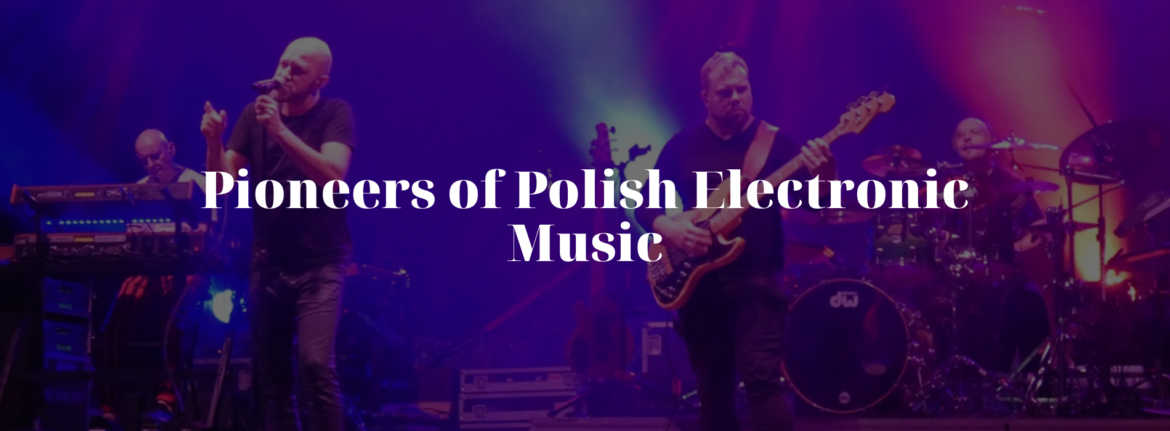Kombi is one of the most influential Polish music bands, leaving a lasting mark on the country’s pop-rock scene. Its distinctive sound, built on synthesizers and drum machines, became a hallmark of the 1980s in Poland. The band’s history is tumultuous, full of lineup changes, breakups, and legal disputes over the name, further solidifying its unique status in Polish pop culture.
The Beginnings – Akcenty and Experimental Sounds
The origins of Kombi date back to 1969 in Gdańsk, when the band was formed under the name Akcenty. The group’s founder was Sławomir Łosowski, a keyboardist who would remain its leader throughout the years. Initially, Akcenty gravitated towards jazz-rock and instrumental music, often incorporating long improvisational passages. By 1971, the trio had fully immersed itself in experimental and improvised music, winning first place at the Youth Contemporary Music Festival.
However, as the decade progressed, the group underwent significant transformations. In 1975, Łosowski parted ways with the original rhythm section and began rebuilding the band. Over the next year, he searched for the right musicians, eventually settling on a lineup consisting of himself on keyboards, Waldemar Tkaczyk on bass guitar, Grzegorz Skawiński on vocals and guitar, and Jan Pluta on drums. This marked a turning point in the band’s development. The new members brought a fresh perspective, and together, they decided to move toward a more accessible sound, appealing to a broader audience.
A major shift came in 1976 when the band officially changed its name to Kombi. There are different interpretations of how the name originated. One explanation suggests that it reflected the group’s tendency to „combine” different musical styles. Łosowski himself has stated that the name was chosen for its simplicity and was inspired by the word „kombi,” which at the time referred to a luxury station wagon. Regardless of its origin, the rebranding marked the beginning of Kombi’s evolution into one of Poland’s most recognisable bands.

The Rise to Fame – Synthesizers and the Golden Era
With the new lineup and name in place, Kombi began refining its musical style. Inspired by international artists like Jean-Michel Jarre and Depeche Mode, the band embraced a modern electronic sound, which was still relatively rare in Poland at the time. Their breakthrough came in 1984 with the release of the album Nowy rozdział (New Chapter), which spawned some of their most iconic hits, including Słodkiego miłego życia (Sweet, Pleasant Life), Nie ma zysku (No Profit), and Kochać cię – za późno (To Love You – Too Late). These songs cemented Kombi’s place in the hearts of Polish audiences and became defining tracks of the era.
The band’s success continued with the 1985 album Kombi 4, which featured the smash hits Nasze rendez-vous (Our Rendezvous) and Black and White. The latter song, in particular, gained anthemic status, resonating with a generation that was experiencing social and political changes in Poland. The 1980s were undoubtedly the band’s golden era, as their synthesizer-driven music and futuristic image set them apart from many of their contemporaries.
Conflicts and the End of an Era
Despite their immense popularity, tensions within the band began to surface toward the end of the 1980s. The primary source of conflict was the differing artistic visions of the members. Skawiński and Tkaczyk leaned more towards rock music, while Łosowski remained committed to the electronic sound that had defined Kombi’s identity. These creative differences led to increasing friction, ultimately resulting in the band’s dissolution in 1992.
Following the breakup, the former members pursued separate projects. Skawiński and Tkaczyk went on to form the rock band Skawalker, which later evolved into O.N.A., a highly successful group featuring vocalist Agnieszka Chylińska. Meanwhile, Łosowski remained largely absent from the mainstream music scene for several years.
A Controversial Return – Kombii vs. Kombi
After more than a decade of silence, a new version of the band emerged in 2003. Skawiński, Tkaczyk, and Pluta reunited to form a new group, but without Łosowski. To differentiate themselves, they added an extra „i” to the name, calling themselves Kombii. This new formation took a different musical direction, incorporating more rock elements while still performing many of the classic Kombi hits. The group found commercial success, releasing new albums and playing numerous concerts across Poland.
Meanwhile, Łosowski decided to re-enter the music scene as well. Initially performing under the name Łosowski, he later rebranded his project as Kombi Łosowski. In 2014, he went a step further and began performing simply as Kombi, claiming to be the rightful continuation of the original band. This led to legal battles between the two factions over the rights to the name and legacy of Kombi. The case even reached the Court of Justice of the European Union, which eventually ruled in favor of Skawiński and Tkaczyk. Following the verdict, Łosowski reverted to the Kombi Łosowski name, continuing to perform under that brand.
The Legacy of Kombi
Despite the internal conflicts and legal battles, Kombi’s influence on Polish music remains undeniable. Their pioneering use of synthesizers paved the way for future electronic music artists in the country. Their songs continue to be played on the radio and performed at concerts, proving their enduring popularity.
The band’s story is not just about music but also about the complex relationships between artists, the challenges of navigating the music industry, and the struggle to preserve a shared artistic legacy. Regardless of which version of Kombi fans choose to follow, there is no doubt that the band has left an indelible mark on Polish music history.
